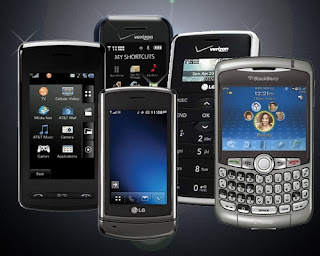The topic for this week’s lesson is unbounded
/unguided media or as called as wireless technology. Unbounded
/ Unguided media or wireless media doesn't use any physical connectors
between the two devices communicating. Usually the transmission is send through
the atmosphere but sometimes it can be just across the rule. Wireless media is
used when a physical obstruction or distance blocks are used with normal cable
media.
TERRESTRIAL MICROWAVE
Terrestrial Micro waves are used are used to
transmit wireless signals across a few miles. Terrestrial system requires that
direct parabolic antennas can be pointed to each other. These systems operate
in a low Giga Hertz range.
CHARACTERISTICS of terrestrial
microwaves:
1)
Moderate to high
cost.
2)
Moderately
difficult installation
3)
1 M bps to 10 M bps
capacity
4)
Variable
attenuation
5)
Low immunity to EMI
6)
The taller the
antenna, the longer the sight distance
There are 2 types of
antenna:
ü Parabolic
dish
ü Horn
PARABOLIC
DISH
A parabolic dish is an antenna that uses a parabolic reflector, a curved surface with the cross-sectional shape of a parabola, to direct the radio waves.
The main advantage of a parabolic dish is that it is highly directive; it functions similarly to a searchlight or flashlight reflector to direct the radio waves in a narrow beam, or
receive radio waves from one particular direction only. Parabolic dish has some
of the highest gains, that is they can produce the narrowest beam width angles, of any antenna type.
 |
| Parabolic Dish |
HORN
A horn antenna is used for the transmission and
reception of microwave signals. It derives its name from the characteristic
flared appearance. The flared portion can be square, rectangular, or conical.
The maximum radiation and response corresponds with the axis of the horn. In
this respect, the antenna resembles an acoustic horn. It is usually fed with a
wave guide.
 |
| Horn |
In order to function properly, a horn antenna must be a
certain minimum size relative to the wavelength of
the incoming or outgoing electromagnetic field. If the horn is
too small or the wavelength is too large (the frequency is too low), the
antenna will not work efficiently.
SATELLITE
Satellite owns a
similar principle as terrestrial microwave where it acts as a super tall
antenna and repeater.
In general, a satellite is anything that orbits
something else, as, for example, the moon orbits the earth. In a communications
context, a satellite is a specialized wireless receiver/transmitter that is launched by a rocket and
placed in orbit around the earth. There are hundreds of satellites currently in
operation. They are used for such diverse purposes as weather forecasting,
television broadcast, amateur
radio communications,
Internet communications, and the Global Positioning System, (GPS).
Transmission from earth to satellite----uplink
Transmission from satellite to earth---downlink
 |
| Satllite |
RADIO FREQUENCY
How Does it Work
|
Radio frequency use
electrical oscillation to transmit its signal. When an RF
current is supplied to an antenna, an electromagnetic field is created that
then is able to propagate through space.
|
Equipment
|
In order to receive radio signals an antenna must be
used.
|
Distance covered
|
Different forms of electromagnetic energy are
categorized by their wavelengths and frequencies. The RF part of the
electromagnetic spectrum is generally defined as that part of the spectrum
where electromagnetic waves have frequencies in the range of about 3
kilohertz (3 kHz) to 300 gigahertz (300 GHz).
|
 |
| Different Types of Radio Frequency |
CELLULAR PHONE
How Does it Work
|
Make and receive telephone calls over a radio link whilst moving
around a wide geographic area. It does so by connecting to a cellular network provided by a mobile phone operator,
allowing access to the public telephone network. By contrast, a cordless telephone is
used only within the short range of a single, private base station.
|
Equipment
|
Cellular phone
|
Distance covered
|
As the cellular telephone user moves from one
cell or area of coverage to another, the telephone is effectively passed on
to the local cell transmitter.
|
 |
| Cellular Phone |
WIFI
How Does it Work
|
Wifi allows an electronic
device to exchange data wirelessly (using radio waves) over a computer network, including
high-speed Internet connections. The Wi-Fi Alliance defines Wi-Fi as any "wireless local area network (WLAN) products that are based on the Institute of
Electrical and Electronics Engineers' (IEEE) 802.11 standards.
|
Equipment
|
A device that can use
Wi-Fi (such as a personal computer, video game console, smartphone, tablet, or digital audio player) can connect to a
network resource such as the Internet via a wireless network access point.
|
Distance covered
|
Access point (or hotspot) has a range of
about 20 meters (65 feet) indoors and a greater range outdoors. Hotspot
coverage can comprise an area as small as a single room with walls that block
radio waves or as large as many square miles
|
I would like to share a
video with you all. It is an interesting video regarding to the difference
between 3G and 4G… J

